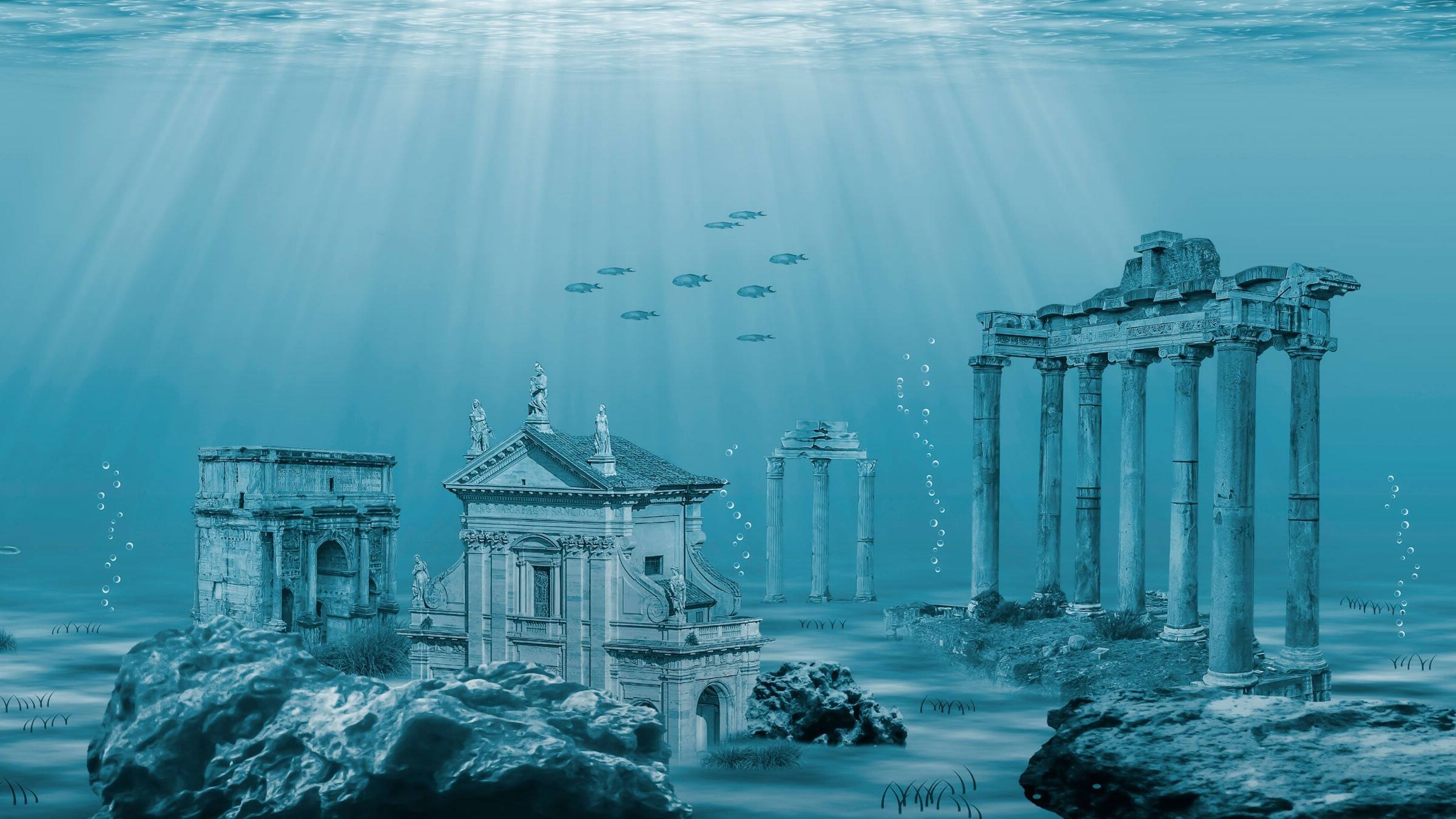
Lost cities have always sparked our curiosity, weaving tales of adventure, mystery, and ancient civilizations. These forgotten metropolises, often hidden by time, natural disasters, or human conflict, hold secrets that continue to intrigue us. From the ruins of ancient Egypt to the jungles of South America, these cities offer a glimpse into the past, revealing the triumphs and tragedies of civilizations long gone. Why do lost cities captivate us so much? They inspire a sense of adventure and allow us to reflect on our lives against their romantic, crumbling backdrops. The allure lies not just in their mystery but also in the stories they tell about human civilization.
Key Takeaways:
- Lost cities, like Amarna and Shangri-La, offer glimpses into ancient civilizations and their mysterious disappearances, sparking curiosity and wonder.
- Rediscovering lost cities, such as Angkor and Thonis-Heracleion, often involves local knowledge and collaboration, highlighting the importance of respecting and working with local communities.
The Fascination with Lost Cities
Lost cities have always sparked curiosity and wonder. These ancient metropolises, hidden by time, disasters, or conflict, offer glimpses into civilizations long gone. From Egypt to South America, they reveal stories of triumph and tragedy.
-
A Pharaoh’s Capital: Amarna
Pharaoh Amenhotep IV, later Akhenaten, built Amarna in ancient Egypt. This city broke from traditional Egyptian norms, focusing on the sun disk Aten. After Akhenaten's death, religious authorities abandoned and destroyed Amarna to erase his revolutionary ideas. -
Shangri-La: A Legendary Kingdom
Shangri-La, a mythical kingdom in the Tibetan mountains, was popularized by an English novelist. The legend began with 16th-century missionary Antonio Andrade, who claimed to find a wealthy kingdom in harsh terrain. Its existence remains unconfirmed, but the idea still captivates. -
Percy Fawcett’s Quest: The Lost City of Z
Colonel Percy Fawcett, an adventurer, sought a lost city called “Z” in the Amazon. In 1925, he entered the jungle with his son and a friend, never to be seen again. Fawcett's disappearance is one of exploration's enduring mysteries. -
The Shaman-Queen Himiko
Japan's lost kingdom of Yamatai, ruled by Queen Himiko in the third century CE, remains undiscovered. Himiko, a shaman, never married and had only one male associate: her brother. Her 1,000 women attendants add to her mystique. -
El Dorado: A Mythical Treasure
El Dorado, the dream of conquistadors, may have been a people, not a place. The Muisca's succession ceremony, where the new leader adorned in gold made offerings to the gods, likely inspired the myth. Explorers searched for a treasure that might not have existed.
Rediscovering Ancient Marvels
Lost cities aren't just myths; many have been rediscovered, revealing their grandeur and history. These rediscoveries often involve local knowledge and collaboration.
-
Rediscovering Angkor
Angkor in Cambodia was thought lost until French explorer Henri Mouhot arrived in 1860. He misunderstood its grandeur, speculating it was built by Greeks or Egyptians. This highlights how colonialism justified the "discovery" of lost cities. -
The Quest for Atlantis
Plato's fictional island nation of Atlantis has fascinated explorers for centuries. It serves as an allegory for moral decline and divine punishment. The myth has been used to justify colonialism and new land discoveries. -
Modern-Day Lost Cities
Some lost cities vanished in the last few centuries. Akkad, despite extensive knowledge of the Akkadian Empire, remains unfound. Cities like Ekallatum, Waššukanni, Tarḫuntašša, and Kummani also remain unexcavated. -
Thonis-Heracleion: An Underwater City
Thonis-Heracleion, an ancient Egyptian port, sank into the Mediterranean 1,500 years ago. Rediscovered in 2000 by archaeologist Franck Goddio, it revealed artifacts like 16-foot statues of Pharaoh Ptolemy II and his queen. -
Troy: A Legendary City
Troy, famous from Homer’s Iliad, was rediscovered in the 19th century. The site contains several ruin layers, with Troy VIIa likely being the city described in the Iliad. Its exact location and extent remain debated.
Mysteries and Legends
Some lost cities are shrouded in mystery, with their exact locations and stories still debated by historians and archaeologists.
-
Ciudad Perdida: An Ancient Colombian City
Ciudad Perdida, or the Lost City, in Sierra Nevada, Colombia, was founded around 800 AD. It features terraces carved into the mountainside and tiled roads. Abandoned during the Spanish conquest, it remains a significant archaeological site. -
Carthage: A City of Rivalries
Carthage in present-day Tunisia was founded by Phoenician colonists and became a Mediterranean power. Destroyed by Romans in 146 BC and rebuilt, it was destroyed again in 698 AD during the Muslim conquest. Carthage's history is marked by intense rivalries. -
Tartessos: A Possible Source of Atlantis
Tartessos in southern Spain might be the source of the Atlantis story by Herodotus. Its exact location is debated, but it was an important ancient city, adding to the rich tapestry of lost cities. -
The Roanoke Colony: A Mysterious Disappearance
The Roanoke colony, the first permanent English settlement in North America, vanished mysteriously. The word "CROATOAN" carved into a tree is one of the few clues left. Some believe the colonists integrated with local tribes, but their fate remains unknown. -
Genghis Khan’s Final Resting Place
Genghis Khan’s final resting place is still debated. Despite extensive searches, the site remains unknown, adding to the enigma of one of history’s most influential figures.
The Role of Local Knowledge
Local knowledge often plays a crucial role in rediscovering lost cities. Collaborating with local communities can lead to significant archaeological finds.
-
The Importance of Local Knowledge
Local knowledge was key in discovering Thonis-Heracleion. Fishermen knew the sunken city's location. Similarly, local tribes helped locate Ciudad Perdida in Colombia, emphasizing the importance of collaboration. -
Archaeological Challenges
Excavating large sites like Babylon, which covered about 450 hectares, is daunting. Despite over a century of work, only 3% of the original city has been uncovered, mostly from Neo-Babylonian levels. This highlights the challenges faced by archaeologists. -
The Rediscovery of Troy
Troy, once thought lost, was rediscovered in the 19th century. The site contains several ruin layers, with Troy VIIa likely being the city described in Homer’s Iliad. Its exact location and extent remain debated. -
Ciudad Perdida: An Ancient Colombian City
Ciudad Perdida, or the Lost City, in Sierra Nevada, Colombia, was founded around 800 AD. It features terraces carved into the mountainside and tiled roads. Abandoned during the Spanish conquest, it remains a significant archaeological site. -
Carthage: A City of Rivalries
Carthage in present-day Tunisia was founded by Phoenician colonists and became a Mediterranean power. Destroyed by Romans in 146 BC and rebuilt, it was destroyed again in 698 AD during the Muslim conquest. Carthage’s history is marked by intense rivalries.
Forgotten Settlements
Some settlements have completely vanished, leaving behind only a few clues about their existence.
-
Utica and Shirley: Lost Settlements in Arkansas
Utica and Shirley, early American settlements in Phillips County, Arkansas, have unknown locations. Started in the 1810s on the White River, they left behind only a few marriage certificates and liquor licenses, a testament to their forgotten history. -
Paititi: A Lost City in Peru
Paititi, described on petroglyphs in Peru, remains unidentified. Some believe it to be a place of great wealth, while others see it as a mythical destination. -
The Importance of Collaboration
Collaboration between archaeologists and local communities is crucial in discovering lost cities. Thonis-Heracleion and Ciudad Perdida highlight how local knowledge can lead to significant finds, emphasizing the importance of respecting local communities. -
Archaeological Excavations
Excavating ancient cities is complex and time-consuming. Babylon's excavation, for instance, has uncovered only a small portion despite over a century of work. This underscores the challenges faced by archaeologists. -
The Rediscovery of Troy
Troy, once thought lost, was rediscovered in the 19th century. The site contains several ruin layers, with Troy VIIa likely being the city described in Homer’s Iliad. Its exact location and extent remain debated. -
Ciudad Perdida: An Ancient Colombian City
Ciudad Perdida, or the Lost City, in Sierra Nevada, Colombia, was founded around 800 AD. It features terraces carved into the mountainside and tiled roads. Abandoned during the Spanish conquest, it remains a significant archaeological site. -
Carthage: A City of Rivalries
Carthage in present-day Tunisia was founded by Phoenician colonists and became a Mediterranean power. Destroyed by Romans in 146 BC and rebuilt, it was destroyed again in 698 AD during the Muslim conquest. Carthage’s history is marked by intense rivalries. -
Rediscovery vs. Discovery
The distinction between rediscovery and discovery is crucial. Many sites, like Angkor and Troy, were not entirely lost but misunderstood or forgotten. Rediscovery often involves local knowledge and collaboration, highlighting the importance of respecting local communities. -
The Role of Local Knowledge
Local knowledge is essential in rediscovering lost cities. Thonis-Heracleion's discovery was facilitated by local fishermen. Similarly, local tribes in Colombia helped locate Ciudad Perdida, emphasizing the importance of collaboration. -
Archaeological Challenges
Excavating a large site like Babylon is daunting. Despite over a century of work, only 3% of the original city has been uncovered, mostly from Neo-Babylonian levels. This highlights the challenges faced by archaeologists. -
Tartessos: A Possible Source of Atlantis
Tartessos in southern Spain might be the source of the Atlantis story by Herodotus. Its exact location is debated, but it was an important ancient city, adding to the rich tapestry of lost cities. -
The Roanoke Colony: A Mysterious Disappearance
The Roanoke colony, the first permanent English settlement in North America, vanished mysteriously. The word "CROATOAN" carved into a tree is one of the few clues left. Some believe the colonists integrated with local tribes, but their fate remains unknown. -
Genghis Khan’s Final Resting Place
Genghis Khan’s final resting place is still debated. Despite extensive searches, the site remains unknown, adding to the enigma of one of history’s most influential figures. -
Utica and Shirley: Lost Settlements in Arkansas
Utica and Shirley, early American settlements in Phillips County, Arkansas, have unknown locations. Started in the 1810s on the White River, they left behind only a few marriage certificates and liquor licenses, a testament to their forgotten history. -
Paititi: A Lost City in Peru
Paititi, described on petroglyphs in Peru, remains unidentified. Some believe it to be a place of great wealth, while others see it as a mythical destination.
The Enduring Fascination with Lost Cities
Lost cities aren't just myths or legends; they're tangible pieces of history that continue to captivate our imagination. From Amarna in ancient Egypt to the mysterious Roanoke colony, these forgotten metropolises reveal the triumphs and tragedies of civilizations long gone. They inspire a sense of adventure and curiosity, fueling grand expeditions and tall tales. Rediscovering places like Angkor and Thonis-Heracleion shows the importance of local knowledge and collaboration. The allure of lost cities lies not just in their mystery but in the stories they tell about human civilization. Whether it's the quest for El Dorado or the search for Genghis Khan’s final resting place, these ancient sites remind us of our enduring fascination with the past. They are a testament to human curiosity and our desire to uncover the secrets of history.
Frequently Asked Questions
Was this page helpful?
Our commitment to delivering trustworthy and engaging content is at the heart of what we do. Each fact on our site is contributed by real users like you, bringing a wealth of diverse insights and information. To ensure the highest standards of accuracy and reliability, our dedicated editors meticulously review each submission. This process guarantees that the facts we share are not only fascinating but also credible. Trust in our commitment to quality and authenticity as you explore and learn with us.


